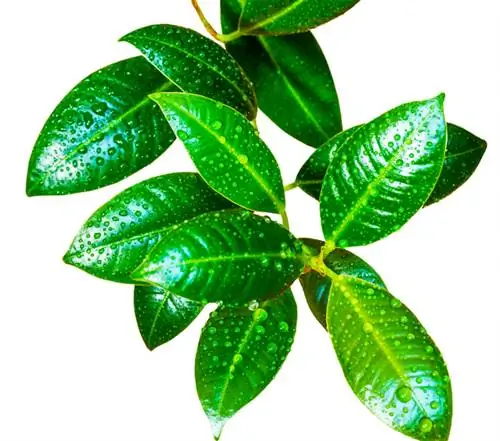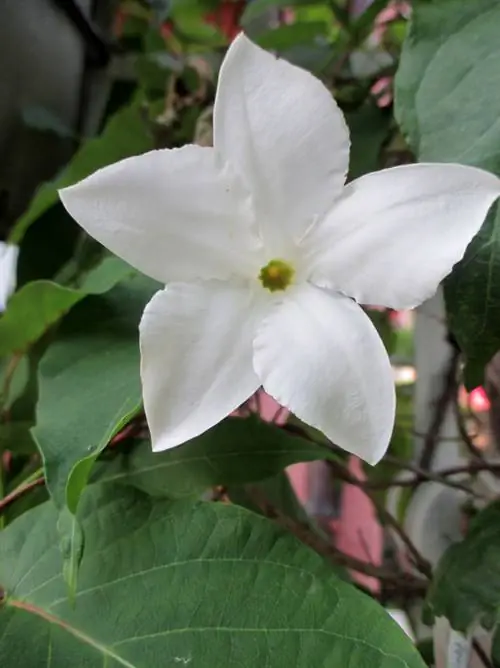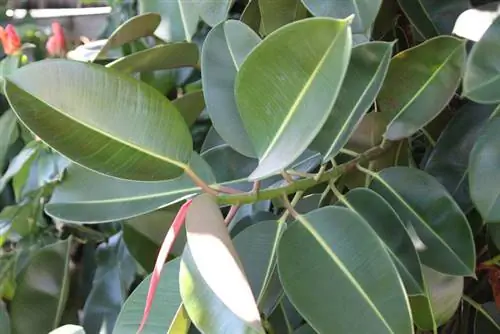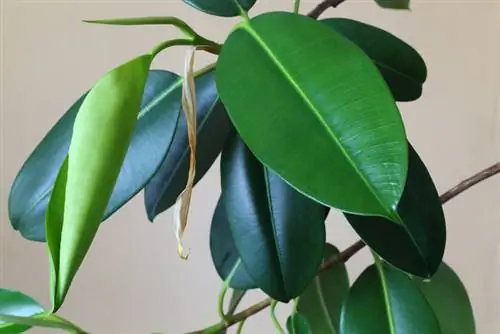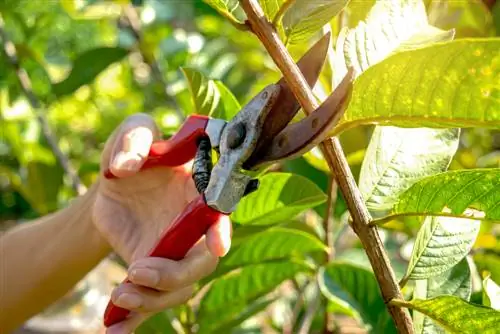- Author admin [email protected].
- Public 2023-12-16 16:46.
- Last modified 2025-01-23 11:20.
The rubber tree (lat. Ficus elastica) is a species of plant that belongs to the fig genus (lat. Ficus). Since it is easy to care for, it is often kept as an office or house plant and is now bred in different varieties.
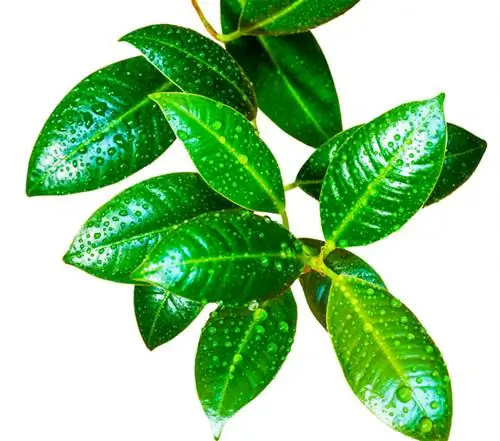
What are the differences between the different types of rubber trees?
The different rubber tree species differ in leaf size, color and robustness. Variegated varieties require more light, while green-leaved ones thrive better in partial shade. Robust varieties are more resistant to drafts, temperature fluctuations and pests.
How do the different varieties differ?
In addition to the green-leaved varieties, there are also rubber trees that have colorful leaves. For example, the Ficus variegeta has leaves with a yellow edge and also yellow spots. The Ficus tricolor, on the other hand, shows a gray and cream pattern or pinkish-red and cream spots on its dark green leaves. Other varieties, such as Ficus robusta, are characterized by their particular robustness.
Which rubber tree is best for me?
Choosing a suitable rubber tree depends on various things. Among other things, the location is not insignificant. The rubber tree generally needs a lot of light, but this is especially true for the variegated-leaved varieties. If you want your rubber tree to be in partial shade, then green-leaved trees are more suitable.
If the available space is not completely protected from drafts or perhaps not always warm, then a particularly robust species is recommended. The rubber tree prefers warm temperatures of around 20 °C to 25 °C. A robust variety is also less susceptible to diseases and pests.
How do I care for the different species?
In principle, all varieties require the same care, but variegated varieties are considered to be a little more sensitive. Rubber trees should not be watered too much or dipped. After diving, be sure to drain the excess water thoroughly so that waterlogging does not occur. Fertilize your rubber tree about every six weeks, it is not one of the plants with high nutrient requirements.
Distinctive characteristics of the rubber tree:
- various sheet sizes
- various leaf colors
- Varieties with variegated leaves need more light
- plain green rubber trees are best able to tolerate partial shade
- special robustness
Tip
If you cannot offer your rubber tree a really bright location, then it is better to choose a variety with simple green leaves. This tolerates light shade better than multi-colored rubber trees.

